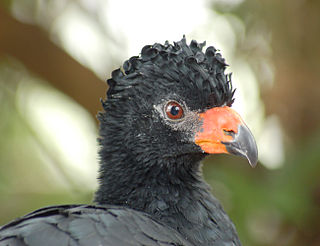
F, or f, is the sixth letter in the Latin alphabet, used in the modern English alphabet, the alphabets of other western European languages and others worldwide. Its name in English is ef, and the plural is efs.

T, or t, is the twentieth letter in the Latin alphabet, used in the modern English alphabet, the alphabets of other western European languages and others worldwide. Its name in English is tee, plural tees. It is derived from the Semitic Taw 𐤕 of the Phoenician and Paleo-Hebrew script via the Greek letter τ (tau). In English, it is most commonly used to represent the voiceless alveolar plosive, a sound it also denotes in the International Phonetic Alphabet. It is the most commonly used consonant and the second most commonly used letter in English-language texts.
In Greek mythology, Epione is the wife of Asclepius. Her name derives from the word ηπιος, and she was probably a personification of the care needed for recovery. With Asclepius, she had five daughters, Aceso, Aglaea, Hygieia, Iaso, and Panacaea as listed in the Suda. She also had two sons, Machaon and Podalirius, who are mentioned in the Iliad of Homer as well as Telesphoros.

Curassows are one of the three major groups of cracid birds. They comprise the largest-bodied species of the cracid family. Three of the four genera are restricted to tropical South America; a single species of Crax ranges north to Mexico. They form a distinct clade which is usually classified as the subfamily Cracinae.

The folk music of England is a tradition-based music which has existed since the later medieval period. It is often contrasted with courtly, classical and later commercial music. Folk music traditionally was preserved and passed on orally within communities, but print and subsequently audio recordings have since become the primary means of transmission. The term is used to refer both to English traditional music and music composed or delivered in a traditional style.

Ground squirrels are members of the squirrel family of rodents (Sciuridae), which generally live on or in the ground, rather than trees. The term is most often used for the medium-sized ground squirrels, as the larger ones are more commonly known as marmots or prairie dogs, while the smaller and less bushy-tailed ground squirrels tend to be known as chipmunks. Together, they make up the "marmot tribe" of squirrels, Marmotini, a division within the large and mainly ground squirrel subfamily Xerinae, and containing six living genera. Well-known members of this largely Holarctic group are the marmots (Marmota), including the American groundhog, the chipmunks, the susliks (Spermophilus), and the prairie dogs (Cynomys). They are highly variable in size and habitus, but most are remarkably able to rise up on their hind legs and stand fully erect comfortably for prolonged periods. They also tend to be far more gregarious than other squirrels, and many live in colonies with complex social structures. Most Marmotini are rather short-tailed and large squirrels. At up to 8 kg (18 lb) or more, certain marmots are the heaviest squirrels.

A keynote in public speaking is a talk that establishes a main underlying theme. In corporate or commercial settings, greater importance is attached to the delivery of a keynote speech or keynote address. The keynote establishes the framework for the following programme of events or convention agenda; frequently the role of keynote speaker will include that of convention moderator. It will also flag up a larger idea—a literary story, an individual musical piece, or event.

Rosa 'Ispahan', also known as 'Rose d'Ispahan' and 'Pompon des Princes', is a clear pink, half-open kind of Damask rose, a type of garden rose introduced from the Middle East to Europe during the crusading 13th century.

The Adena culture was a Pre-Columbian Native American culture that existed from 500 BCE to 100 CE, in a time known as the Early Woodland period. The Adena culture refers to what were probably a number of related Native American societies sharing a burial complex and ceremonial system. The Adena culture was centered on the location of the modern state of Ohio, but also extended into contiguous areas of northern Kentucky, eastern Indiana, West Virginia, and parts of extreme western Pennsylvania.

The history of the Jews in Armenia is one of the Jewish communities in the Caucasus region. There is evidence of Jewish settlement in the Armenian Highlands dating as early 1st century BC.

The history of Earth concerns the development of planet Earth from its formation to the present day. Nearly all branches of natural science have contributed to understanding of the main events of Earth's past, characterized by constant geological change and biological evolution.
The Aviones or Auiones were one of the Nerthus-worshipping Germanic tribes of the 1st century mentioned by Tacitus in Germania, and they lived either in the southern Jutland Peninsula, or on Öland. They are mentioned in Widsith as Eowan.

Dzyomgi Airport is an air base in Khabarovsk Krai, Russia located 8 kilometres (5 mi) northeast of Komsomolsk-na-Amure. Dzyomgi is Komsomolsk-na-Amure's northeast side airport, handling small airliner traffic.

The Trophic State Index (TSI) is a classification system designed to rate water bodies based on the amount of biological productivity they sustain. Although the term "trophic index" is commonly applied to lakes, any surface water body may be indexed.

Fan death is an urban myth that people have died as a result of running an electric fan in a closed room with no open windows. While the supposed mechanics of fan death are impossible given how electric fans operate, belief in fan death persisted to the mid-2000s in South Korea, and also to a lesser extent in Japan.

Cueva de la Olla is an archaeological site located in the northwest of the Chihuahua State, some 47 km southwest of Nuevo Casas Grandes near the Ignacio Zaragoza Ejido.

Tetrachlorvinphos is an organophosphate insecticide used to kill fleas and ticks.
Camuliana, Camulia, Kamoulianai, or Kamoulia was an ancient town or perhaps a village in ancient Cappadocia, located northwest of Caesarea, today Kayseri in Turkey. It is mostly mentioned in connection with the Image of Camuliana, an acheiropoieton or "icon not made by hands" of the face of Christ, which was one of the earliest of this class of miraculously created icons to be recorded; this is also sometimes referred to simply as the "Camouliana". During Byzantine times, the town was also called Iustinianoupolis Nova.

ISIS-chan is a fictional manga character which originated on the Japanese internet textboard 2channel and was created in 2015 after a series of incidents in which Japanese nationals were kidnapped and beheaded by ISIL. The character is portrayed as a moe-style girl.















